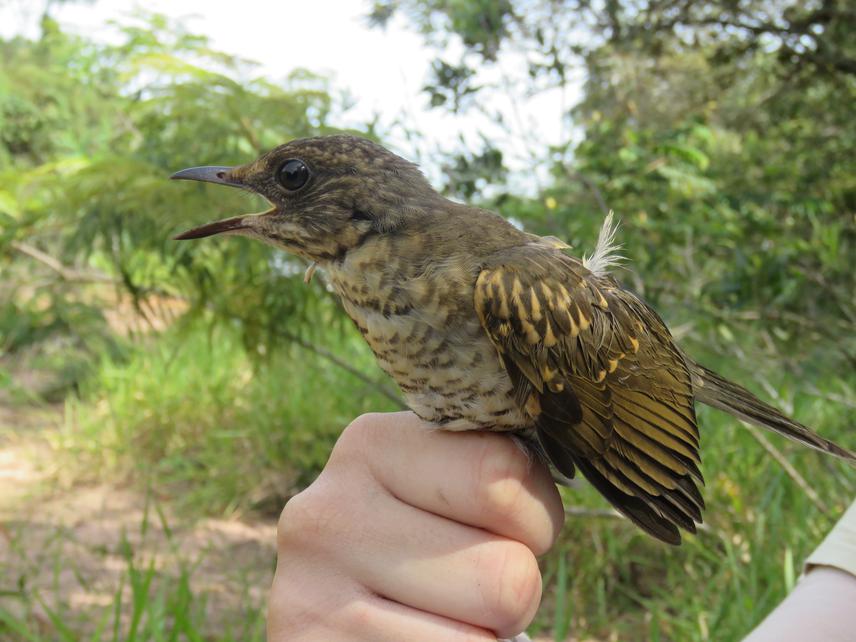Mariana Lopes Campagnoli
Land conversion in Neotropical savannas is creating fragmented landscapes and threatening many unique seed-dispersal interactions that sustains ecosystem dynamics, plant regeneration and provisioning of ecosystem services. In Cerrado, most woody plants depend on animals for seed dispersal, allowing gene-flow and colonization/recolonization of disturbed patches. Our goal with this project is to understand how the match among traits of frugivorous birds (e.g., abundance, mass, gape width) and plants (e.g., fruit and seed size) influence seed dispersal, and to predict consequences of bird extinctions to potential failures in plant regeneration. Our results will provide hints about the most important frugivores and plants to protect. The novel information gathered during this project will be transformed into a field guide introducing the key bird dispersers, most vulnerable plant species, as well as an overview of the importance of seed dispersal for Cerrado conservation.

This project aims to identify plant and bird traits that influence seed dispersal, increasing our knowledge about the biodiversity and functioning of remnants of Brazilian Cerrado. Sampling includes measuring plant and bird traits, registering bird-plant interactions, capturing birds, germination experiments, seed addition experiments and monitoring of seedling for at least one year. Results will help us to identify key traits of animals and plants that may predict successful seed dispersal. These results have theoretical and applied implications. From a theoretical perspective, results may shed light on the evolution of plant and frugivore traits and what would be the potential consequences for plant-regeneration and long-term viability of Cerrado remnants in a species extinction prone scenario. From an applied perspective the results could be extended to other areas of Cerrado with similar biogeographical settings, helping scientists and park managers to predict consequences of disperser extinctions to plant regeneration and act to avoid or mitigate these consequences (for instance, by reinforcing conservation or promoting translocation/reintroduction programs of frugivorous birds and plants more susceptible). By creating and sharing a field guide we expect to help to achieve these applied implications, raising awareness for local community and park managers about the importance of maintaining seed dispersal for Cerrado conservation, as well as what are the key seed dispersers providing those services, and the most vulnerable plants that need protection.